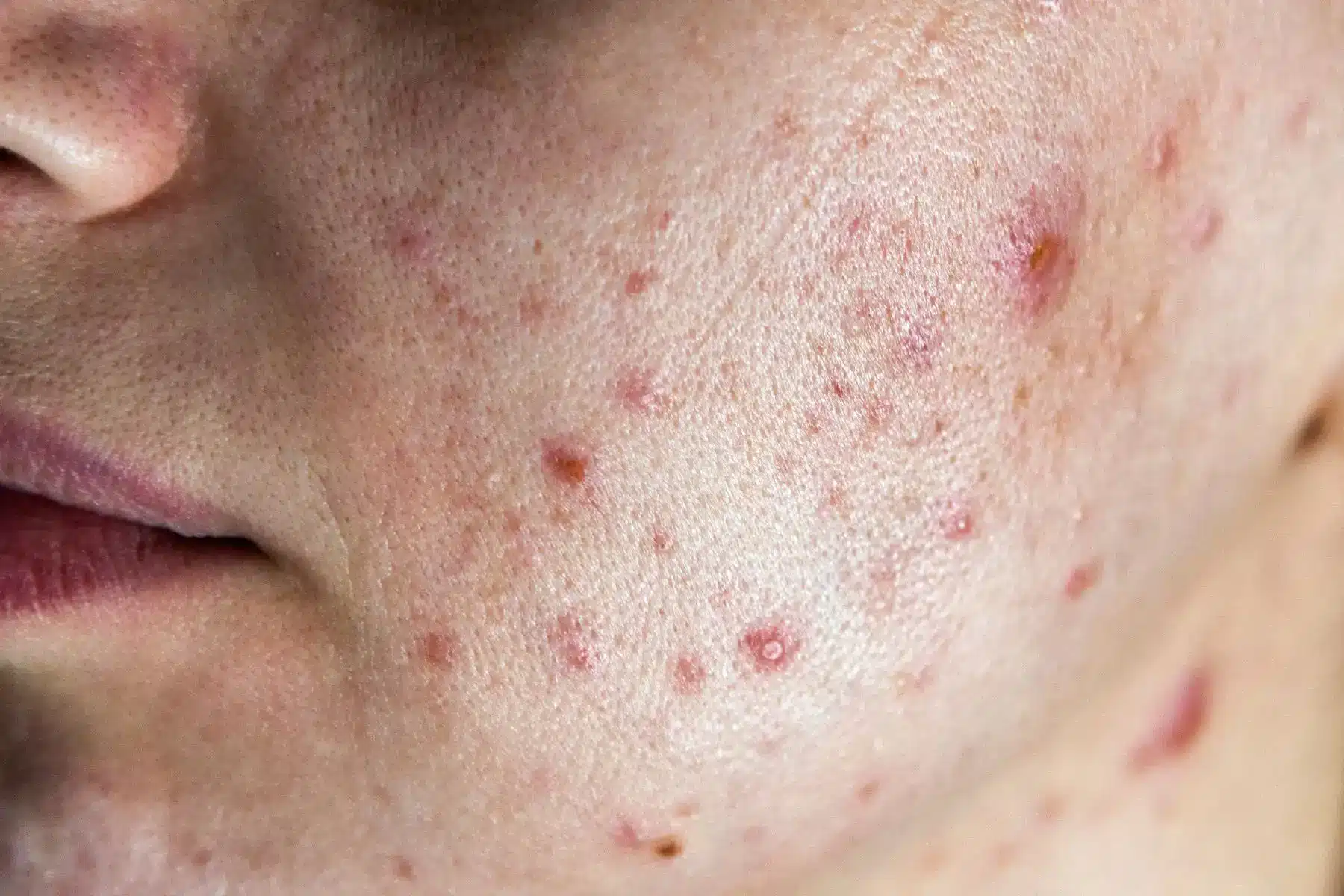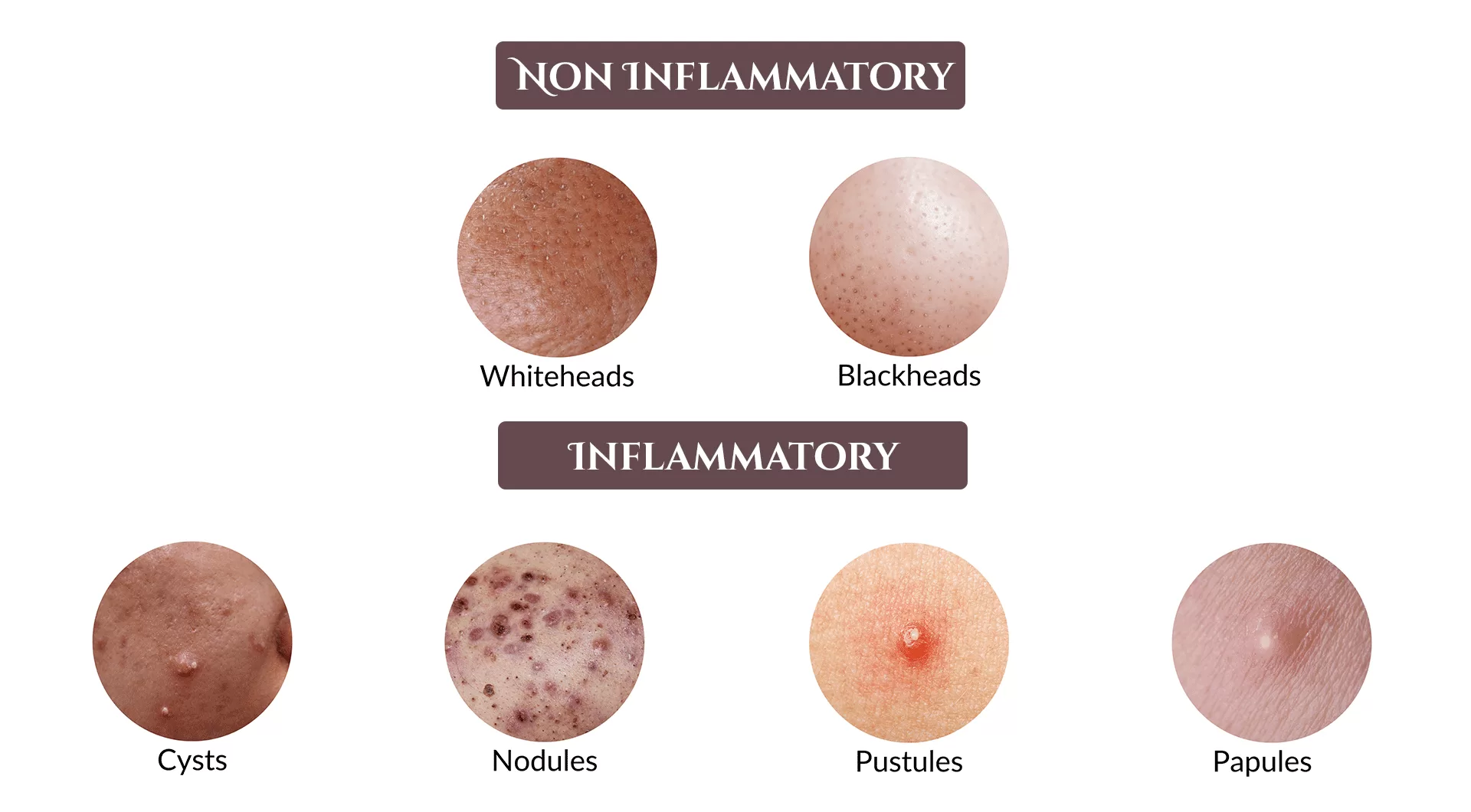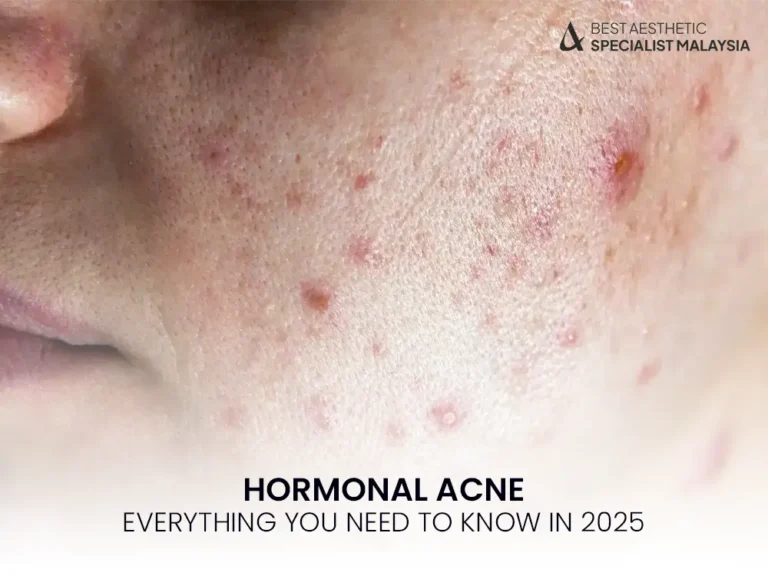Hormonal acne is one of the most common skin concerns affecting both teenagers and adults. Unlike occasional pimples, this type of acne is deeply linked to fluctuations in hormones, making it more stubborn and difficult to treat with over-the-counter products alone. Acne is expected to affect 50% of women aged 20 to 29. It affects around 25% of women aged 40 to 49.
Whether you are dealing with hormonal acne on the chin, jawline, or cheeks, understanding the root cause is key to finding the right treatment. In this article, we’ll cover the causes, symptoms, treatment options, skincare routines, and lifestyle tips that can help you manage acne effectively.
What Is Hormonal Acne?

Hormonal acne occurs when changes in hormones – particularly androgens like testosterone and dihydrotestosterone (DHT) – trigger the sebaceous glands to produce more oil. This excess oil, combined with clogged pores and bacteria, leads to inflamed breakouts.
It is especially common in:
Teenagers during puberty
Women during menstrual cycles, pregnancy, or menopause
Individuals with PCOS (Polycystic Ovary Syndrome)
People under chronic stress, which increases cortisol
Unlike bacterial acne, hormonal acne tends to appear in specific areas such as the chin, jawline, and lower cheeks, and can recur regularly.
5 Symptoms of Hormonal Acne

Recognizing the symptoms helps differentiate it from other types of acne. Common signs include:
Painful, deep cystic acne on the jawline or chin
Pimples that flare up during menstruation
Acne resistant to regular skincare routines
Oily skin with clogged pores and blackheads
Breakouts that leave dark spots or acne scars
What Causes of Hormonal Acne?
1. Hormonal Fluctuations:
The primary cause of hormonal acne is hormonal imbalances, where certain hormones in the body fluctuate and overstimulate the sebaceous (oil) glands in the skin. This leads to increased oil production, clogged pores, and acne development. Key hormones involved in this process include:
Androgens: These are male hormones that are present in both men and women, although women have them in smaller amounts. Androgens (like testosterone) stimulate the sebaceous glands to produce more oil. High levels of androgens can cause an overproduction of sebum (skin oil), which, when combined with dead skin cells, can clog pores and promote the growth of acne-causing bacteria.
Estrogen: Estrogen is the female hormone responsible for regulating the menstrual cycle, and its levels fluctuate throughout the month. Low estrogen levels (which occur before menstruation or during menopause) can contribute to acne flare-ups. Estrogen helps reduce the production of sebum, so when it decreases, the oil glands are more active.
Progesterone: This hormone rises after ovulation (mid-cycle) and can promote acne by increasing the skin’s oil production. High levels of progesterone in the second half of the menstrual cycle often correlate with an increase in acne breakouts.
Insulin: This hormone, responsible for regulating blood sugar, can influence acne. High insulin levels can trigger an increase in androgen production, leading to more sebum production and acne. People with insulin resistance or conditions like polycystic ovary syndrome (PCOS) often experience elevated insulin levels, contributing to hormonal acne.
2. Menstruation and the Menstrual Cycle:
Hormonal acne is particularly noticeable in women and often follows the cyclical changes in estrogen, progesterone, and testosterone throughout the menstrual cycle. The key stages include:
Pre-Menstruation: About a week before menstruation (during the luteal phase), progesterone levels increase. This can lead to a surge in sebum production, resulting in clogged pores and acne. As estrogen levels drop, androgen activity increases, worsening acne in some individuals.
Ovulation: During ovulation, estrogen peaks and can help balance out the production of sebum. However, the transition from high estrogen to higher progesterone levels in the second half of the cycle can trigger acne flare-ups.
Post-Menstruation: After menstruation, when hormone levels stabilize, acne may subside temporarily, and skin may begin to improve until the next cycle.
3. Pregnancy and Postpartum Hormonal Changes:
Pregnancy causes dramatic hormonal changes. During pregnancy, especially in the first trimester, the body experiences high levels of progesterone, which increases sebum production and may result in acne. However, during the second and third trimesters, estrogen levels increase, and some women experience an improvement in acne.
After childbirth, the body undergoes significant hormonal changes again. Postpartum hormonal shifts, especially the decrease in progesterone and estrogen, can trigger hormonal acne in new mothers.
4. Polycystic Ovary Syndrome (PCOS):
PCOS is a condition that causes an imbalance in reproductive hormones, leading to higher levels of androgens (male hormones) in the body. This can cause a variety of symptoms, including hirsutism (excessive hair growth), irregular periods, and hormonal acne, especially around the chin, jawline, and upper neck. Women with PCOS often have insulin resistance, which also plays a role in exacerbating acne.
5. Medications and Birth Control:
Certain medications can cause hormonal fluctuations that result in acne. This includes:
Oral contraceptives (birth control pills): Some birth control pills contain synthetic hormones that regulate androgen levels and can help reduce acne. However, other forms of birth control (like progestin-only pills) may lead to acne due to an increase in progesterone.
Steroids: Anabolic steroids, commonly used for performance enhancement or muscle growth, can significantly increase androgen levels, leading to acne.
Anticonvulsants: Certain epilepsy medications can affect hormone levels and trigger acne outbreaks.
IUDs: Hormonal intrauterine devices (IUDs) can also affect androgen production, leading to acne in some individuals, especially within the first few months after insertion.
6. Diet and Insulin Resistance:
Diet plays a crucial role in regulating hormones, particularly insulin and IGF-1 (Insulin-like Growth Factor 1). Foods with a high glycemic index (GI), such as processed carbohydrates, sugary foods, and dairy, can cause a spike in insulin levels. This can lead to increased sebum production and contribute to acne formation.
Dairy products: Some studies suggest that dairy, particularly milk, can exacerbate acne due to its effect on insulin and androgen production.
High Glycemic Foods: Foods like white bread, sugary snacks, and refined grains may increase blood sugar levels, promoting acne through insulin-related mechanisms.
7. Stress and Cortisol:
Stress can increase levels of cortisol, a hormone that plays a role in the body’s fight-or-flight response. Chronic stress causes a sustained increase in cortisol, which in turn can trigger an increase in androgen hormones. This leads to more oil production in the skin and acne. Stress can also make existing acne worse by reducing immune function and promoting inflammation.
8. Genetic Predisposition:
Hormonal acne often runs in families. If your parents or siblings experienced acne during puberty or hormonal fluctuations, you may be more likely to develop it. Genetics can determine how your body reacts to hormonal changes, as well as how much oil your skin produces.
9. Age and Hormonal Changes:
Hormonal acne is commonly associated with puberty and adolescence, when the body undergoes a surge in androgen hormones. However, adult acne can also develop as a result of hormonal imbalances due to lifestyle changes, pregnancy, or menopause. As women approach menopause, their estrogen levels decrease, which can result in an increase in androgen activity, leading to adult hormonal acne.
10. Thyroid Imbalance:
The thyroid gland regulates metabolism and overall hormone balance. Hypothyroidism (underactive thyroid) or hyperthyroidism (overactive thyroid) can affect hormonal levels and potentially cause acne. When the thyroid is out of balance, it can contribute to changes in androgen levels, which in turn can cause breakouts.
Acne on the Chin & Jawline
One of the most tell-tale signs of hormonal pimples is when breakouts appear along the chin and jawline area. This region is particularly sensitive to hormonal fluctuations. Unlike random pimples, these lesions are often deeper, more painful, and longer-lasting.
Hormonal Acne vs. Bacterial Acne
Hormonal Acne → Linked to internal hormone fluctuations, usually deeper and cystic, appearing on chin/jawline.
Bacterial Acne → Caused by surface bacteria, often spread across the forehead, nose, and cheeks, and responds to topical antibiotics.
Understanding this difference is crucial for choosing the right treatment plan.
How To Get Rid Of Hormonal Acne Effectively
The good news is, hormonal acne can be managed effectively with the right approach. Treatment options include:
1. Skincare Routine
Use gentle cleansers with salicylic acid to unclog pores.
Apply benzoyl peroxide to reduce bacteria.
Incorporate retinoids to improve cell turnover and reduce clogged pores.
2. Topical & Oral Medications
Topical Retinoids – adapalene, tretinoin
Oral Contraceptives – regulate hormones in women
Spironolactone – blocks androgen effects on oil glands
Antibiotics – for short-term inflammation control
Isotretinoin – for severe, resistant acne
3. Professional Dermatology Treatments
Chemical peels to exfoliate and fade scars
Laser therapy to reduce inflammation and scarring
Microneedling for skin regeneration
Hormonal evaluation & endocrinology referral for underlying conditions
4. Natural Remedies & Lifestyle Changes
Maintain a low-glycemic diet
Manage stress with exercise and meditation
Sleep 7–8 hours daily
Hydrate and avoid excessive dairy or sugary foods
Where to Seek Help?
In Malaysia, many aesthetic clinics and dermatology centers specialize in acne treatment issues. KKM-licensed aesthetic doctors and dermatologists provide evidence-based solutions including medications, advanced skincare, and in-clinic treatments tailored to your condition.
Patients often combine lifestyle adjustments with professional treatments for long-term improvement.
Conclusion
Hormonal acne is more than just a skin problem – it reflects internal imbalances. By understanding its causes and symptoms, you can find the right treatment, whether through skincare, medications, or dermatology procedures.
If you’re struggling with persistent acne, consulting a dermatologist or aesthetic specialist in Malaysia is the best step toward clear, healthy skin.
FAQs
1. What causes hormonal acne?
Hormonal acne is caused by fluctuations in hormones, particularly androgens, which increase oil production and clog pores.
2. How do I know if my acne is hormonal?
Hormonal acne usually appears on the chin and jawline, flares around menstrual cycles, and feels deeper and more painful than regular pimples.
3. What is the best treatment for hormonal acne?
Treatment may include topical retinoids, oral contraceptives, spironolactone, or isotretinoin, depending on severity. Dermatologist guidance is essential.
4. Can hormonal acne be treated naturally?
Yes, lifestyle changes such as stress management, balanced diet, proper sleep, and skincare can help, though medical treatment is often needed for severe cases.
5. Is hormonal acne common in adults?
Yes, many adults, especially women in their 20s–40s, experience hormonal acne due to stress, PCOS, pregnancy, or menopause.

